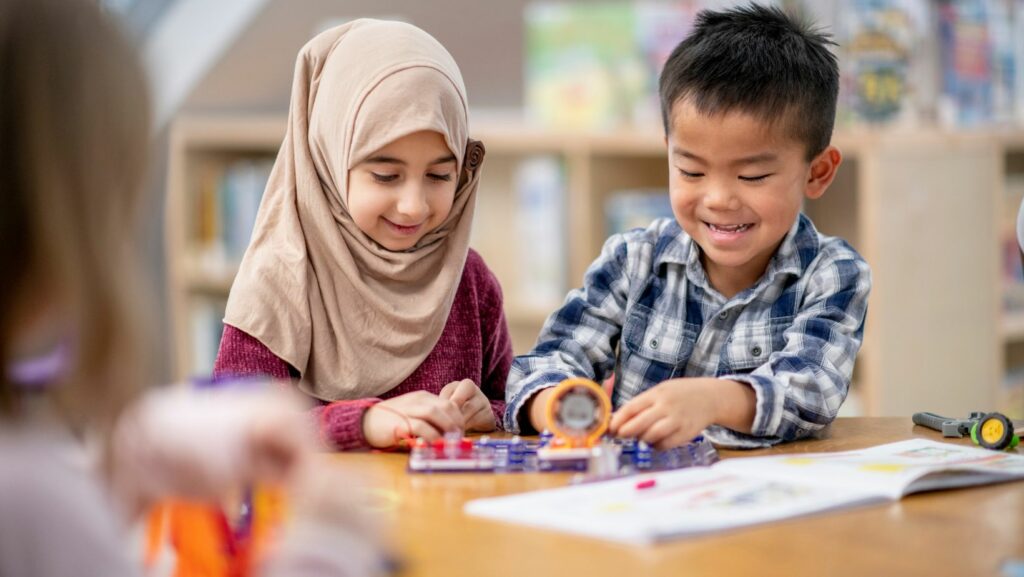In today’s fast-paced world, hands-on learning activities have emerged as a powerful tool for education. These interactive experiences engage learners in a way that traditional methods often can’t, fostering deeper understanding and retention of knowledge. By actively participating in their learning process, students not only grasp concepts better but also develop critical thinking and problem-solving skills.
Hands On Learning Activities
Hands-on learning activities provide students with engaging and interactive experiences that enhance comprehension and retention. These activities often involve real-world tasks, allowing learners to apply concepts in practical settings.
Examples of Hands On Learning Activities
-
 Science Experiments: Engaging in experiments like conducting chemical reactions or building simple circuits fosters curiosity and supports understanding of scientific principles.
Science Experiments: Engaging in experiments like conducting chemical reactions or building simple circuits fosters curiosity and supports understanding of scientific principles. -
Art Projects: Creating sculptures, paintings, or digital art nurtures creativity and enables expression, helping students explore different artistic techniques.
-
Garden Projects: Planting and maintaining a garden teaches students about ecosystems, biology, and responsibility, while encouraging teamwork and patience.
-
Field Trips: Visiting museums, factories, or historical sites provides contextual learning opportunities that reinforce classroom knowledge through real-life experiences.
-
Culinary Activities: Cooking or baking activities teach measurement, following instructions.
Benefits of Hands On Learning Activities
-
Enhanced Engagement: Activities that involve manipulation and participation capture student interest and encourage active participation in learning.
-
Improved Retention: Involvement in hands-on tasks leads to better knowledge retention, as students connect theory with practice.
-
Critical Thinking Development: Problem-solving during hands-on activities fosters effective critical thinking skills as students navigate challenges and seek solutions.
-
Collaboration Skills: Many hands-on tasks require teamwork, promoting communication skills and cooperation among peers.
-
Adaptation to Learning Styles: Hands-on activities cater to various learning styles, ensuring all students find pathways to success based on their strengths.
Benefits of Hands On Learning Activities
Hands-on learning activities provide numerous advantages in educational settings, significantly impacting student engagement and retention of knowledge. These benefits create a more effective and enjoyable learning experience.
Enhances Engagement
 Hands-on learning activities stimulate students’ interest and motivation. Engaged students participate actively in their learning processes, making it easier to grasp complex concepts. For instance, conducting experiments allows students to witness scientific principles firsthand, reinforcing their understanding. Active engagement leads to deeper connections with the material, fostering a vibrant classroom environment where learners feel excited and empowered. Hands-on learning significantly boosts knowledge retention. Studies show that students remember information better when they apply concepts in practical scenarios. For example, rather than simply reading about
Hands-on learning activities stimulate students’ interest and motivation. Engaged students participate actively in their learning processes, making it easier to grasp complex concepts. For instance, conducting experiments allows students to witness scientific principles firsthand, reinforcing their understanding. Active engagement leads to deeper connections with the material, fostering a vibrant classroom environment where learners feel excited and empowered. Hands-on learning significantly boosts knowledge retention. Studies show that students remember information better when they apply concepts in practical scenarios. For example, rather than simply reading about
Types of Hands On Learning Activities
Hands-on learning activities encompass a variety of interactive experiences that engage students in practical applications of knowledge. These activities cater to different learning styles and encourage active participation.
Creative Arts and Crafts
Creative arts and crafts activities allow students to express their ideas while developing fine motor skills. Examples include:
-
Painting Projects: Students paint on various surfaces, enhancing creativity and color theory understanding.
-
Sculpture Creation: Students use clay or other materials to create three-dimensional art, fostering spatial awareness and design skills.
-
Collage Making: Students combine different materials to represent concepts visually, promoting storytelling through art.
Science Experiments
Science experiments provide students with tangible experiences to explore scientific principles. Notable examples include:
-
Chemical Reactions: Students mix substances to observe changes, illustrating concepts like acidity and evaporation.
-
Plant Growth Observations: Students plant seeds and monitor growth, reinforcing lessons on biology and ecosystems.
-
Physics Demonstrations: Students experiment with motion using simple machines, enhancing comprehension of physics laws.
Challenges of Hands On Learning Activities
While hands-on learning activities offer numerous benefits they also come with their own set of challenges. Educators may face constraints such as limited resources and time, making it difficult to implement these engaging methods effectively. Additionally, some students might struggle with certain activities, requiring tailored support to ensure everyone can participate meaningfully.
Balancing curriculum requirements with hands-on experiences can be tricky but it’s essential for fostering an inclusive learning environment. By addressing these challenges and remaining adaptable, educators can create impactful experiences that not only enhance knowledge retention but also cultivate a love for learning. Embracing hands-on activities ultimately enriches the educational journey for students, preparing them for future success.


